Background
To learn about radio, I started with the simplest module I could find: a simple 433 MHz receiver and transmitter module pair, where you can use RadioHead ASK to bit-bang a signal on the MCU.
I purchased the most widely available module pair on eBay UK. The receiver has the marking RX470C-V01 and the transmitter has no markings. Curiously, this module pair is not the most common on eBay US (so it doesn't feature heavily in videos and tutorials on the Internet).
The most commonly used 433 MHz module pair demonstrated on the Internet actually seems to be the pair with the markings, FS1000A and MX-RM-5V 080408 (e.g. Using Inexpensive 433 MHz RF Modules with Arduino). This seems to be the most available pair sold on eBay US.
Problem
I've been struggling with reliability the RX470C-V01 module pair (the first photo in my question). Often the receiver doesn't get the message from the transmitter. Taking a look at the received signal on the oscilloscope, it doesn't match the transmitted signal very well (some waves are longer/shorter/missing when comparing the two). Reliability degrades further when separating the transmitter and receiver by a few feet. I have tried making my own antenna out of wire and using various external SMA antennas, but this didn't improve reliability and sometimes made it far worse.
The particular eBay listing I purchased from did not specify which antenna was for which module, so I made what I thought was a good guess and soldered the wiggly end of the short antenna to the RX module with two holes. To me, it just looked like that was the right way round. I'm not exactly sure why it has two holes, so if someone could explain this for me, that would be helpful. The longer antenna, I connected to the transmitter (one hole/via for the antenna).
What didn't help, is that the shorter antenna is often shown in eBay listings with the receiver, which tells me that many sellers don't really know either (hardly surprising).
I'm wondering: Why is the end of the shorter antenna wiggly? Why does the the receiver module have two antenna holes/vias?
Edit:
As requested, here is the waveform. I took a picture of the beginning and the end. It's generated by RadioHead ASK, which bitbangs on IO. There are two MCUs and 4 modules; each MCU has a TX and RX module. The first MCU is ESP8266, and the other MCU is an ATtiny84 using an external 8 MHz crystal.
ESP8266 TX waveform start:
ESP8266 TX waveform end:
ATtiny TX waveform start:
ATtiny TX waveform end:
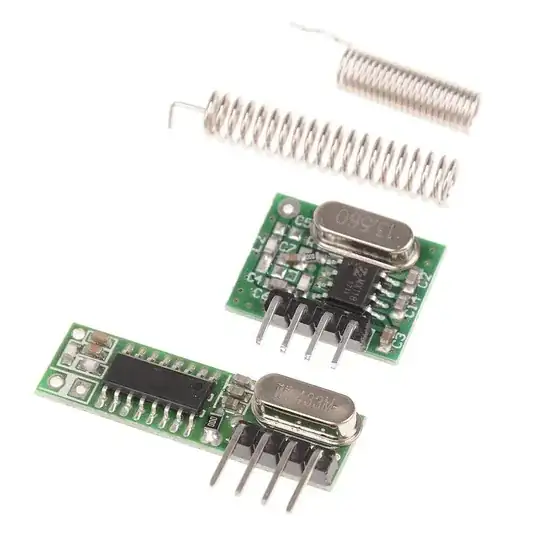


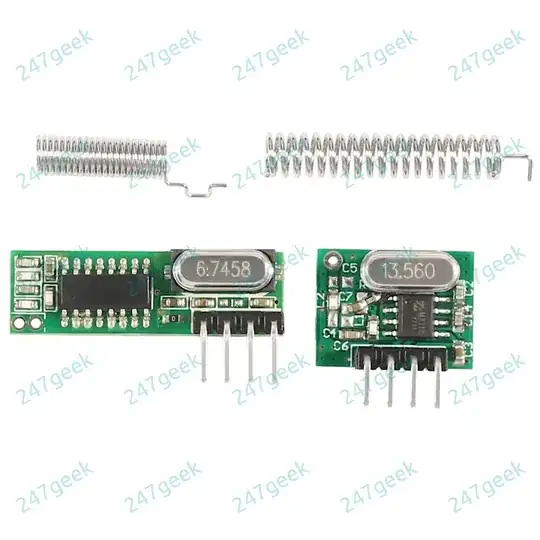
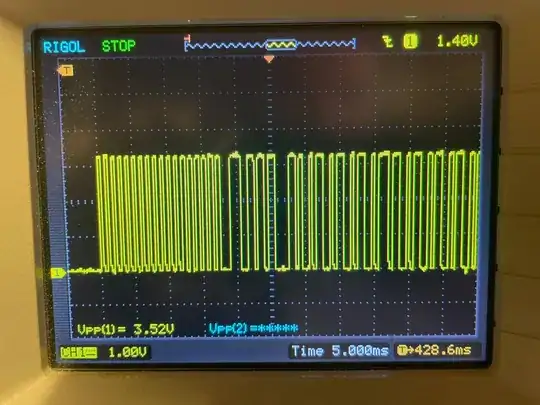




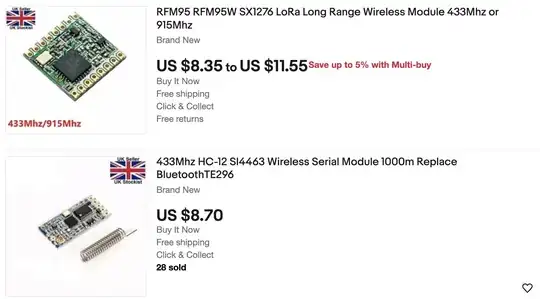
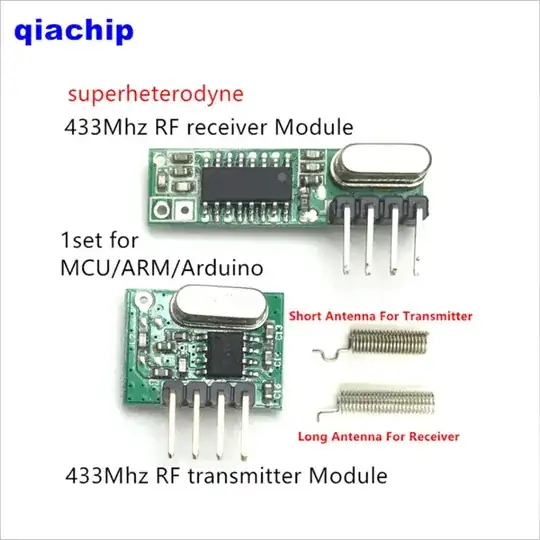
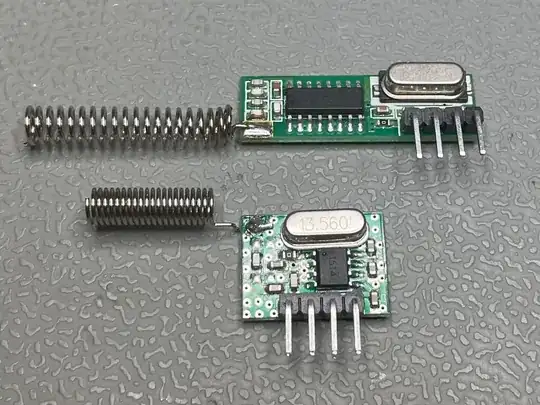
"reputable source that provided a fairly decent data sheet and has a quality assurance system in place" -- As time goes on, I've been preferring Farnell here in the UK, and occasionally Mouser in the US. These days, I only tend to use eBay if I don't care about quality (as you're almost guaranteed for it to be poor). In hindsight, something like the FM-RTFQ/FM-RRFQ would have been a much better idea... https://uk.farnell.com/rf-solutions/fm-rtfq1-433/rf-module-transmitter-fm-433mhz/dp/1200970?st=433%20module
– Nick Bolton Oct 24 '22 at 14:11